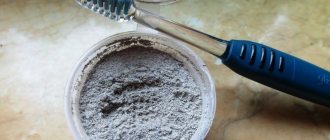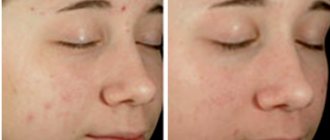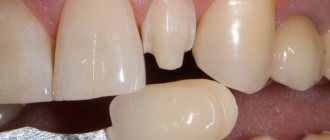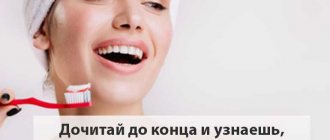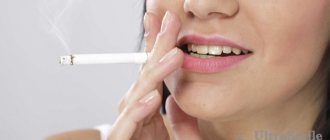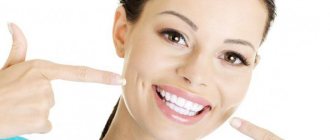Prevention
- A healthy lifestyle and daily oral care using personal hygiene products will help prevent the development of gumboil. For cleaning, use a medium-hard brush.
- After each meal, it is recommended to rinse your mouth with a special mouthwash or use dental floss. Instead of a pharmaceutical composition, it is allowed to use an aqueous solution of food salt, sea salt or an alcoholic tincture of propolis.
- Do not use non-sterile objects as toothpicks. Such actions lead to mechanical injuries and infection.
- Periodic professional dental cleaning helps remove stone, which provokes the development of inflammation of the gums with pus.
- The daily diet must be supplemented with fresh vegetables and fruits. Apples, carrots and other solid plant foods cleanse plaque from enamel and strengthen teeth.
It is also important to treat dental defects immediately and undergo regular clinical examinations at least twice a year. It is much easier to prevent dental disease than to treat its negative consequences. You should be attentive to your health and not ignore the warning signals that your body gives.
Note to parents: features of children's toothpastes
Parents should understand that toothpastes have a broad classification, and each of these types will be recommended for patients of a certain age or for certain diseases of the oral cavity. For children under one year of age, it is recommended to use only gel toothpastes that are not abrasive and contain enzymes as a cleaning component. Therefore, they have a pleasant milky taste and are free of harmful components that can cause trouble for the baby.
For children over one year old, pastes with a low level of abrasiveness are also recommended, but from the class of therapeutic and prophylactic, and not hygienic.
The composition of therapeutic and prophylactic pastes contains calcium, phosphorus, and fluorine. These microelements saturate the enamel with minerals and strengthen it. Children's pastes that are age-appropriate are safe even when swallowed; their components are broken down by the body's defenses and safely eliminated.
In case of inflammation of the gums, as well as in adolescence, children should use therapeutic and prophylactic pastes, which contain medicinal plants with anti-inflammatory properties.
Dangerous additives
Saccharin is a non-hazardous substance that helps manufacturers make the taste of pasta more pleasant and soft. However, sugar can also negatively affect the condition of the oral cavity, because, as is known, sweets provoke the development of bacteria and can lead to the gradual destruction of hard tissues.
Glycerin is a necessary additive that prevents toothpaste from quickly hardening and drying out even when opened. Unfortunately, the substance can cause digestive problems. Another component is paraffin. It is necessary to achieve the thickness and viscosity of the product. Large amounts of this substance in the body can lead to severe vomiting or constipation.
Is menthol included in toothpastes dangerous? Unfortunately, yes, it can negatively affect the functioning of the human heart and blood vessels, while it freshens breath very well. Formaldehyde is necessary to resist dangerous microbes, however, frequent use of pastes containing it, and especially their entry into the body when swallowed, can lead to vision problems and the development of pathological processes in the liver and kidneys.
Why do children need toothpaste?
Many parents have a policy of increased safety for children and try to protect them from all “chemicals.” One of the most common refusals is limiting the use of toothpaste or forming unfounded fears of certain types of toothpastes.
Meanwhile, you cannot refuse it. It contains cleaning components that help dissolve bacterial film and remove plaque even from hard-to-reach places. In addition, toothpaste contains substances that dissolve pigment plaque.
Some minerals are also introduced into the composition of therapeutic and prophylactic pastes: sometimes calcium, phosphorus, sometimes fluorine, which helps saturate the enamel with minerals and make it more resistant to the action of aggressive acids that secrete bacteria that cause caries.
Even with the obvious need for toothpaste, its use in young children is still controversial. One group of dentists came to the conclusion that it is possible and necessary to use toothpaste from the eruption of the first tooth, but only those that are age-appropriate and have the appropriate composition. The second group of dentists does not see the need to use toothpaste in children under one year of age.
As for the use of toothpastes with fluoride, the opinions of dentists are clear - they are prohibited for use in children under three years of age, or longer if children do not know how to rinse their mouths and spit.
Types of dental abscess
Pyogenic bacteria enter healthy gum tissue through the bloodstream or due to mechanical damage. An abscess appears in the area of the affected element. When the abscess matures, the mucous membrane acquires a bluish tint, and a whitish spot or characteristic bubble appears. With its rupture, a fistula is formed in the periodontium, through which the contents flow out. This phenomenon does not lead to the disappearance of the problem, the inflammation remains. The pathology is indicated by the flow of pus from the gums when pressing on the affected area. There are several types of abscess:
Toothpastes with various inclusions
To stimulate even greater interest in brushing children's teeth, various plastic inclusions are introduced into toothpastes: stars, multi-colored balls, plates, etc. Such inclusions introduced into toothpastes were considered safe. But dentists are beginning to sound the alarm, claiming that oral problems are related to hygiene problems.
These particles, made of polyethylene, cannot biodegrade, but can get stuck in the tiny gaps between teeth and gums. In addition, such particles not only get stuck between the teeth, but can trap bacteria, which can ultimately cause gum inflammation and the development of tooth decay.
The alarm was first raised by Trish Whopravan, a dental hygienist from Texas. This wave has led to numerous studies that have shown that such inclusions do more harm than good. After published studies, most companies stopped using such toothpastes by 2016.
What to do if a child ate adult pasta
Adult products contain fluoride. They are dangerous when ingested in large quantities into the gastrointestinal tract. Cause the following negative reactions:
- intoxication with increased body temperature;
- irritation and inflammation of the mucous membrane;
- profuse diarrhea with risk of dehydration.
Parents should give the child a sorbent by immediately going to the hospital. If the doctor sees toxins in the composition, he will prescribe gastric lavage. Additionally, therapy is carried out to replenish the lack of fluid caused by diarrhea. Parents should not give other medications themselves.
Note! The pediatrician will recommend staying in the hospital for 1-2 days after swallowing the substance to eliminate the risk of adverse reactions. If they appear, additional therapy is prescribed.
Swallowing toothpaste in small quantities does not lead to disruption of body functions. But if a child or adult has swallowed a large amount of the product, consult a doctor. The paste can cause serious harm to the gastrointestinal tract. To eliminate the risk for young children, consult a dentist to choose a product that contains only natural ingredients.
Toothpastes for children - dangerous or not?
All formulations marked “from 0 to 3 years” are completely safe and even if a certain amount of the mixture is swallowed there will be no particular harm. There are no medicinal ingredients or preservatives in toothpastes for children. Natural formulations have a limited shelf life - after opening, the tube can be stored for no more than 30 days, and it should be kept in the refrigerator.
Negative consequences from swallowing the toothpaste by a child occur in three cases:
- The child uses a composition that has expired.
- There is an allergy to the components of the drug.
- The child ate too much toothpaste.
The concept of “a lot” is a volume of more than a pea. When teaching your child about hygiene, parents should show the amount of toothpaste that is needed for cleaning. It should be the size of a baby’s little fingernail (pea-sized). The problem arises due to the pleasant aroma and taste of the toothpaste - kids are not averse to eating the entire tube. To avoid this, store the composition in the refrigerator.
The consequences of excessive use of toothpaste by a child are indigestion and allergies such as urticaria.
Features of toothpaste for adults
Children's toothpaste is used up to 3 years of age, then children are transferred to more aggressive formulations with medicinal components. Therapeutic and prophylactic compositions are necessary for thoroughly cleaning teeth from plaque and stone. And such pastes, when eaten, can cause poisoning, headaches, intestinal dysbiosis, etc.
It is best to replace children's toothpaste with adult toothpaste after the baby learns to carefully spit out the remaining mixture.
Tags
Dental restoration, dental imaging, dental tomography, dental implantation, tooth extraction, wisdom tooth removal, dental plaque removal, teeth polishing, teeth whitening, zoom, teeth whitening, Amazing PROSTHETICS, dental prosthetics, treatment of caries, treatment of pulpitis, treatment of periodontal disease, treatment of periodontitis, treatment of periodontitis, treatment schemes. Treatment of caries Treatment of pulpitis Treatment of mobility Treatment of periodontitis
prostheticstreatmentmoscowpricesarticlesandhelpimplantationclinicservicescariesquestionssymptomstimerecordpatientemergencyreviewsfirstcontactspolicysignupresponsemedicalpromotionsbracesiswhiteningorthodonticssurgerydepartmentsdiseasepersonaldatadetailednewsdiagnosticshoursyourveneersinstallationcenter
What experts say
Almost all experts say that if a small amount of toothpaste is accidentally swallowed in rare cases, there is no danger to human health. But if this personal hygiene product systematically penetrates into the esophagus, this is fraught with certain negative consequences in the form of inflammatory processes in the esophagus and disorders in the digestive organs.
That is why the manufacturer warns on every tube of hygiene product that it should not be swallowed.
A child ate toothpaste, is it dangerous?
Of course, there is nothing good in the fact that the baby ate toothpaste, but nothing bad will happen either. Especially if the toothpaste eaten was for children. As a rule, they do not contain anything dangerous and they are made precisely on the basis that the baby, due to inexperience, can swallow it.
Of course, the volume of pasta eaten is also of great importance, as is the manufacturer.
But in general it is not dangerous.
Although, in some cases, vomiting, diarrhea, and also a rash may appear - as an allergic reaction to one of the components - and this is the maximum.
Therefore, there is no need to panic here. Observe the child, how he behaves, how he feels. If in doubt, or the baby complains about something, call an ambulance.
However, if a child has eaten toothpaste, it is better to call an ambulance in any case, on the one hand for your own peace of mind, and on the other, for educational purposes. After all, children are afraid of doctors, so let the child’s emergency visit remain in his memory, and perhaps next time he will think before putting something in his mouth. In the future, this will save you from unnecessary problems, because toothpaste is, one might say, the safest thing that a child can accidentally eat.
A child really likes to eat toothpaste, how to wean him off?
If you buy toothpaste designed specifically for small children, then they pose no danger if swallowed. The thing is that in the production of such pastes, age is taken into account, so they belong to the hygienic class. This means that they contain virtually no medicinal components, such as fluorides. In the production of children's toothpastes, no preservatives are used, which reduces their shelf life - no more than a month after opening the tube, and it is advisable to store such toothpaste in the refrigerator.
So if a child swallows something, there is nothing wrong with it. True, it’s understandable that you can’t eat it in large quantities. Also, any other component can lead to an allergic reaction such as urticaria. In such cases, it is necessary to replace the toothpaste.
You just need to understand that there is no harm from toothpaste only if it is used correctly. Apply no more than a pea-sized amount to your toothbrush and brush your teeth no more than twice a day. The problem is further complicated by the fact that such toothpastes have a pleasant smell and taste, so the child does not mind eating the entire tube at once. Given this fact, it is necessary to store toothpaste between brushings out of the reach of children. If the child does get to it and overeats, this may result in indigestion and the development of hives.
However, you won’t be able to brush with a child’s toothpaste that is safe for the rest of your life. With age, children experience an increase in the formation of dental plaque, which requires a transition to more effective, therapeutic and prophylactic toothpastes. They must be spat out, as they contain a number of components, such as fluorides, antiseptics, surfactants, the entry of which into the body is fraught with various disorders - headaches, stomach pain.
That is why changing toothpaste from children's hygienic to adult, which can already be called therapeutic and prophylactic, should be done only after the baby has firmly grasped the rule of spitting toothpaste after brushing his teeth. Ideally, of course, the child should know about the ban on swallowing toothpaste even after the very first brushing, that is, at the age of about one and a half years. But in practice this is very difficult to achieve. At this age, the emphasis should be placed on the need for cleaning itself, which can rarely cause delight in a child.
Taking all this into account, dentists have concluded that it is better to teach children to spit toothpaste no earlier than three years of age. This choice of age is not accidental - firstly, at this time the child is already quite socially adapted and able to fulfill the requests and demands of adults, and secondly, in most cases, the need to use therapeutic and prophylactic toothpaste arises around the age of four to five years.
It turns out that parents have about a year left to wean their child from swallowing toothpaste before the time when they need to start using it as an adult. In this case, joint brushing of teeth helps a lot, when the child is shown by example exactly how to carry out this procedure correctly. Particular attention should be paid to spitting it at the very end.


